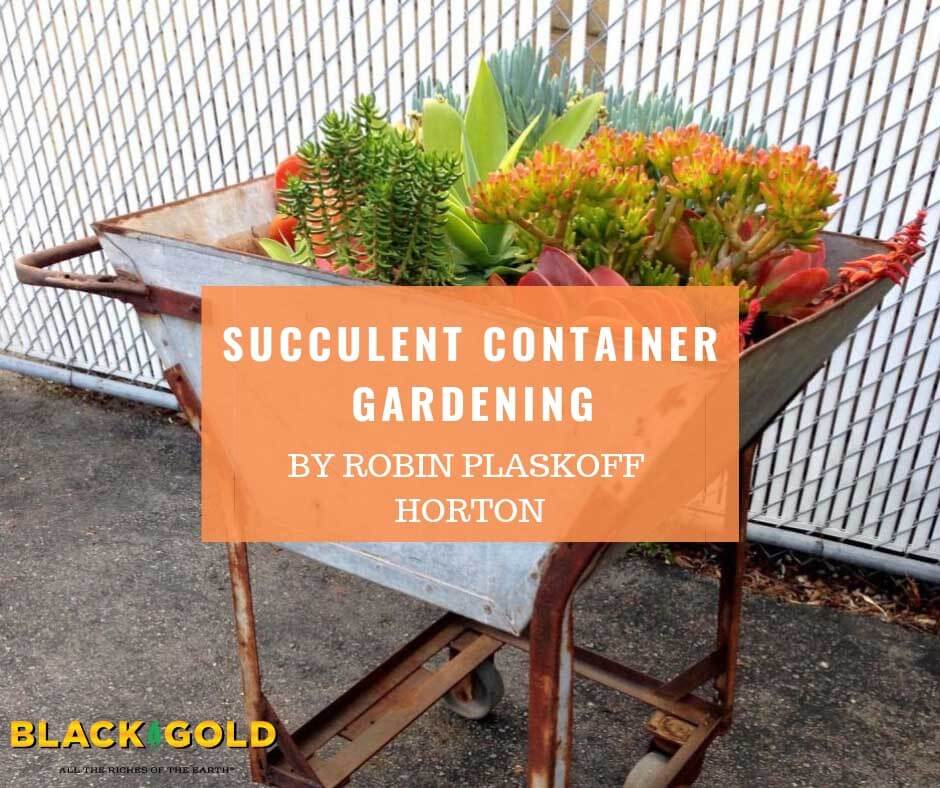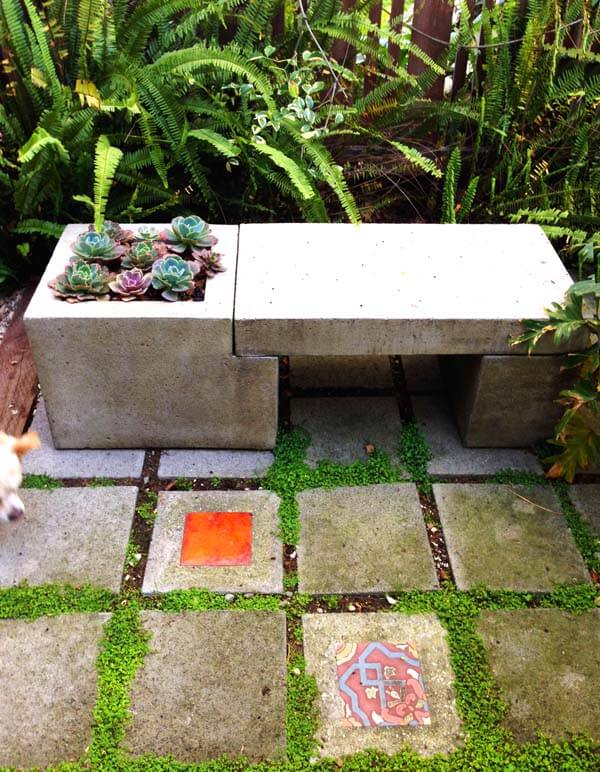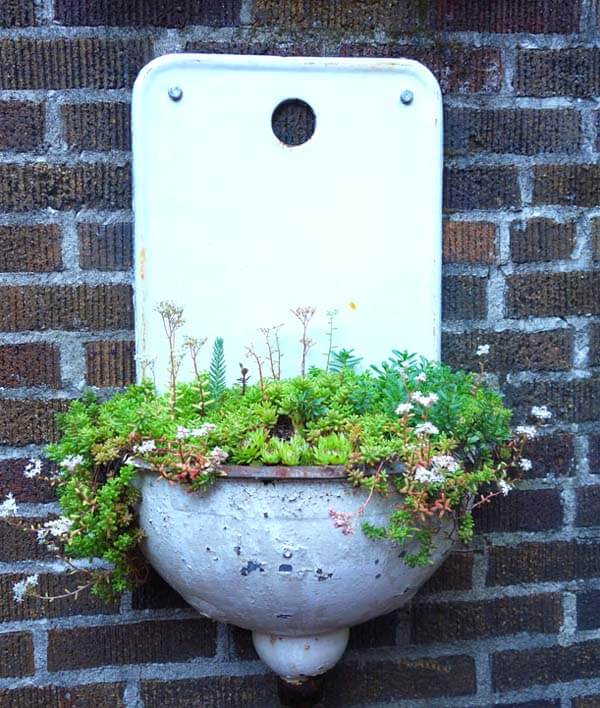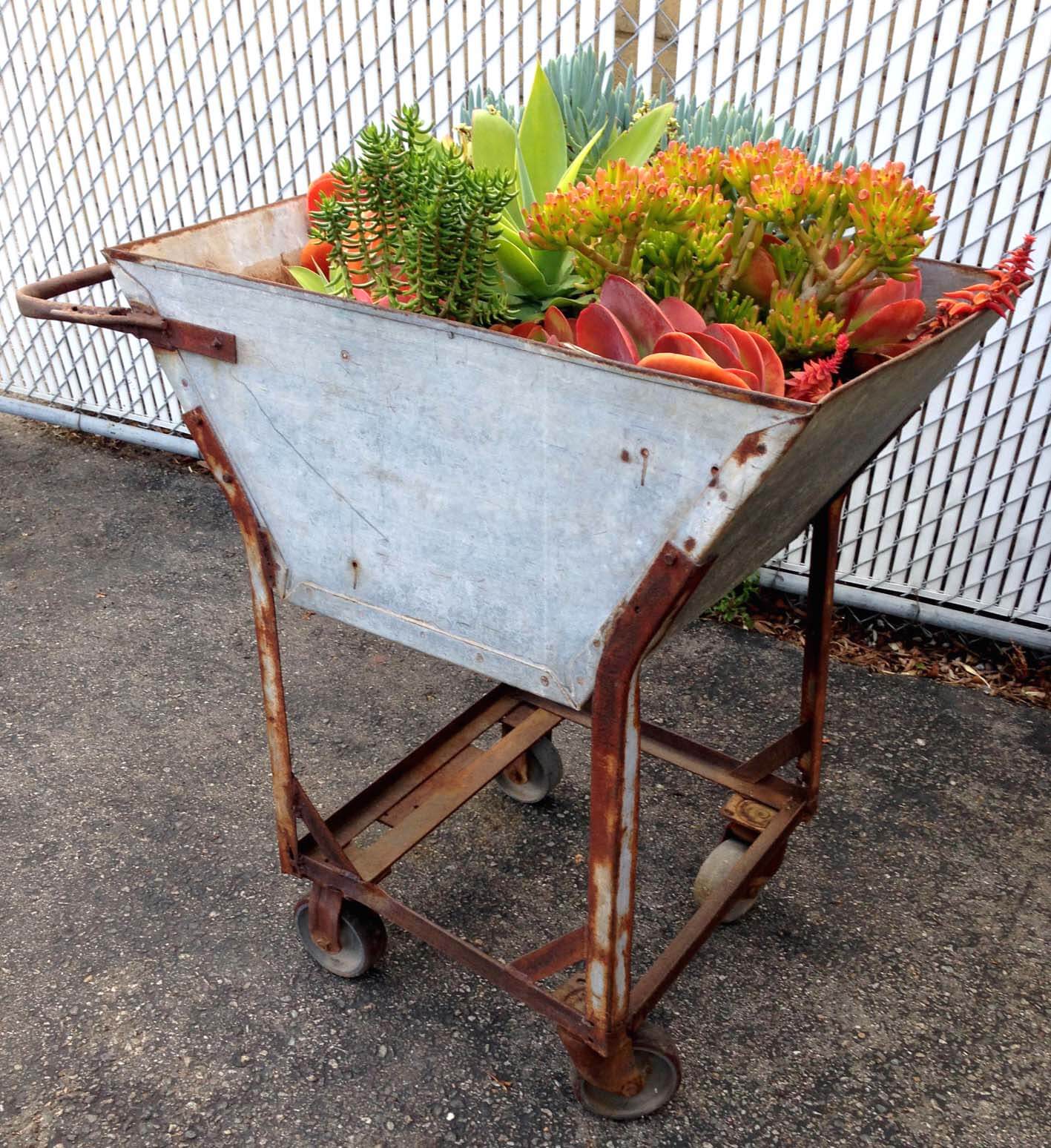
Succulents—a broad group of arid plants that store water in their leaves or stems—are perfect for busy, forgetful, or novice gardeners because they are easy to grow and don’t require much water or maintenance. Some are hardy and others tender, and they come in a myriad of dazzling choices for tough, beautiful container gardens.
So Many Succulents!

With thousands of succulent species across 60 plant families, there are succulents suited for practically all growing conditions. Their aesthetic value is just as vast, with succulents coming in practically all colors, sizes, shapes, and textures. The best garden succulents provide a dazzling palette of hues, not only green but also in brilliant shades of red, pink, orange, yellow, blue and purple. Gardeners can blend and mix up their kaleidoscope of colors and textures as an artist does with paints, to create unique visual effects.
Among the numerous succulent genera, the most common are Agave, Yucca, Aloe, Sedum, Sempervivum, Echeveria (my personal favorite), Crassula, and numerous cacti. The variations within each can be mind-boggling. For example, cacti (with approximately 1750 known species) are all New World succulents and include everything from 40-foot saguaros (Carnegiea gigantea) to 1-inch pincushion cacti. Aloes alone have over 500 species, and when blooming, they attract hummingbirds seeking their sweet nectar.
When choosing succulents for containers, pick smaller varieties amenable to pot culture.
Soil for Succulents
 Sun-loving succulents thrive in well-drained soil comparable to the natural dry-climate soils to which they are accustomed. When planting succulents, know your soil and choose wisely. Fast-draining Black Gold Cactus Mix is the perfect choice for potted succulents. It holds enough water while also providing ample porosity and drainage. To maximize drainage, you can also mix with some sand or gravel into the potting mix.
Sun-loving succulents thrive in well-drained soil comparable to the natural dry-climate soils to which they are accustomed. When planting succulents, know your soil and choose wisely. Fast-draining Black Gold Cactus Mix is the perfect choice for potted succulents. It holds enough water while also providing ample porosity and drainage. To maximize drainage, you can also mix with some sand or gravel into the potting mix.
A cheap and easy way to add more succulents to your pallet is to propagate them from cuttings. To propagate succulents, plant the base of a succulent leaf, pup, cactus pad or division in Black Gold Cactus Mix or Black Gold Perlite, and keep the medium very lightly moist. Starts should root in no time. Easy! [Click here to learn more about propagating Agave pups.]
Watering Succulents
Although succulents tolerate long periods of drought, they still need to be watered about twice a month. Be careful not to over water or leave them in standing water as it causes root rot. Succulent containers must have good drainage, so be sure pots have drainage holes for good water flow. During winter months, water monthly as they need less water in the cool season.
Some Like it Hot or Not…

In general, succulents are opportunistic growers adapted to the hot days and cool nights of their arid regions of origin, but some are less heat tolerant than others. All will actively grow in the right conditions.
Cacti, Agave, and most Yucca are true heat lovers that can take scorching temperatures, while some succulents are more sensitive to high heat. Echeveria and Sempervivum both thrive in milder temperatures, but they differ in cold hardiness. Sempervivum will tolerate winter freezes but need extra care and water in temperatures exceeding 95 degrees F. Very tender succulents like Echeveria will tolerate some cold but can’t handle freezing temperatures. In general, succulents with very thick leaves tend to be more delicate, but don’t do well in temperatures above 95 degrees or below freezing.

As with most plants, succulents do not grow at the same rate year round, and some may even go dormant during periods of extreme heat or cold. As long as they get the necessary amounts of sun and water, succulents will thrive in a wide range of temperatures.
Succulent Seasonality
To every succulent, there is a season. In true temperate, four-season regions, warm weather succulents will grow from May to September, slowing down during peak hot temperatures in July and August. Cool weather succulents actively grow best in spring and fall. They can survive the summer heat, but require more water to keep their roots cool. Midday shade may also be welcome.
Succulent Flowering

Those looking for succulents that flower should keep in mind their various blooming cycles. Sedum produce small flowers in spring, Aloes often bloom sporadically throughout the year, jade plant (Crassula ovata) blooms from late winter to spring, while the century plant (Agave americana) blooms in 10 to 20 years, not every century as the name would imply. True cacti tend to bloom once a year, offering some of the brightest, most beautiful blooms of all the succulents.
Succulent Leaf Attributes

Leafy succulents generally have foliage that varies from long and spiked (Aloe, Agave, Gasteria, and Yucca) to paddle-shaped, tapered, or circular (Crassula, Aeonium, Echeveria, and Graptopetalum). Many form rosettes radiating from the center with a tight cluster of leaves that are either rounded (Jovibarba) or tapered (Sempervivum). Several succulents have a central “mother” plant that produce clusters of offsets (“chicks” for Sempervivum or “pups” for Agave). Offsets may be fast or slow-growing, but their spread helps them become focal points in gardens or containers.
Creative Succulent Container Designs

The breadth and variety in succulent texture, shape, and color can be a call to action for you to exercise your creativity and try something new and different. You can literally start small with a tiny pot containing a single succulent or go big with large pots of diverse succulent gems in attractive containers. Grouping together collections of tiny pots of succulents also looks appealing.
Including potted succulents in indoor or outdoor plantings is a no brainer for xeriscaping (gardening with little water). They can also make great accents or companions for other types of low-water plants, so think outside the planter box and mix them up to make your container compositions spectacular.

Robin Plaskoff Horton is the founder of Urban Garden.
